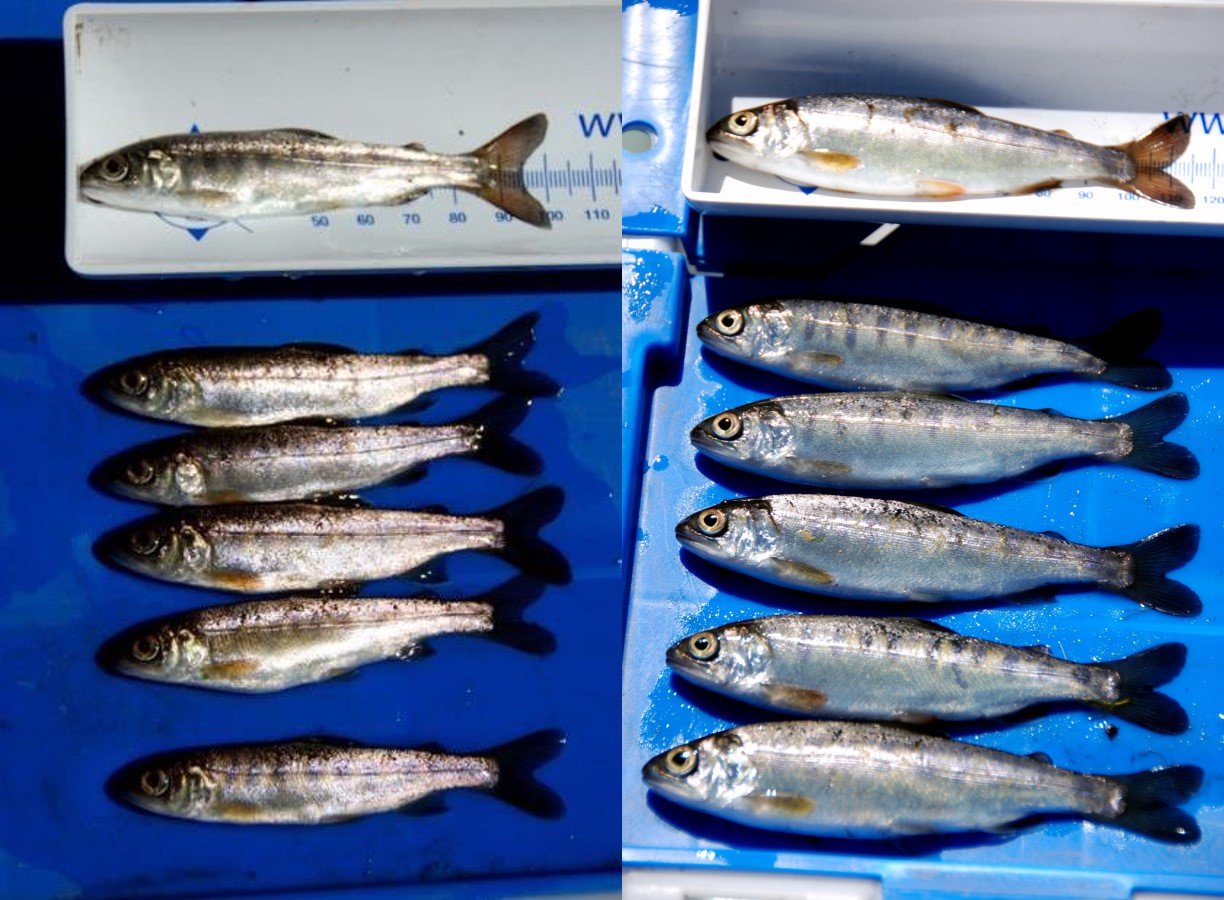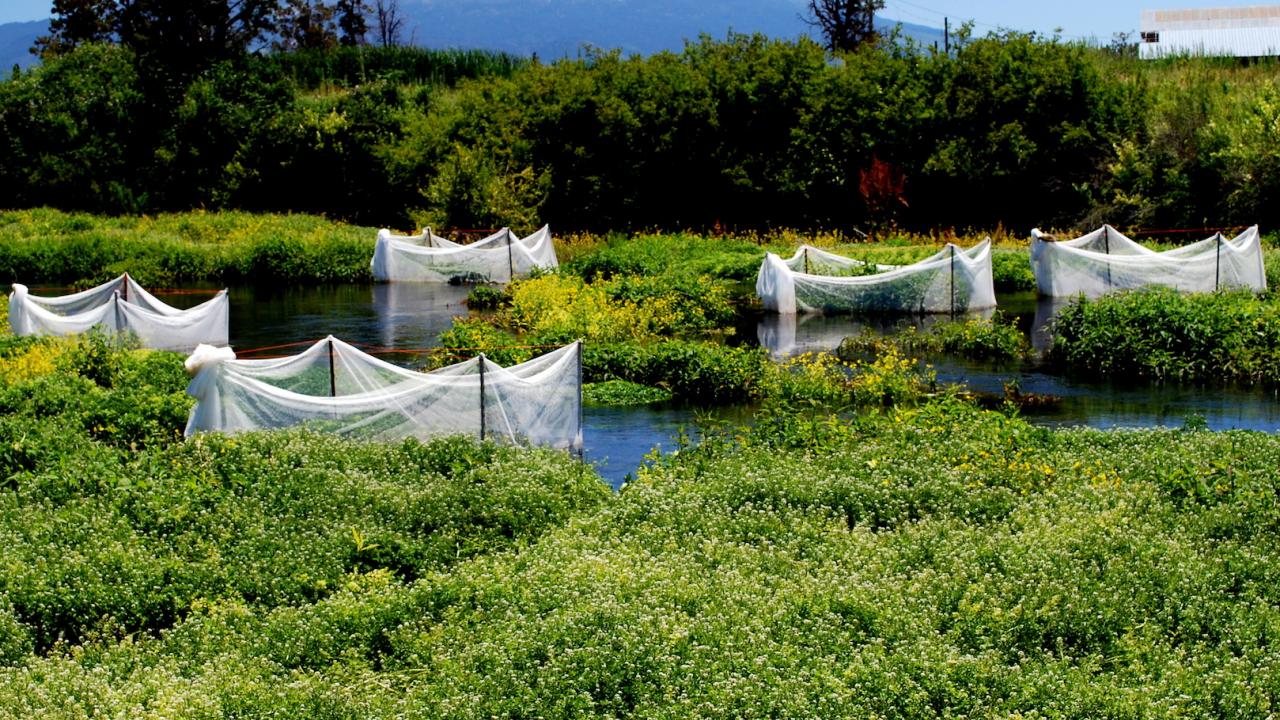Warm waters are a threat to cold water fish like salmon and trout. But a study led by researchers at University of California, Davis suggests that habitats with abundant food sources may help buffer the effects of increasing water temperature.
The study, published in the Canadian Journal of Fisheries and Aquatic Sciences today, Dec. 10, shows that the availability of food in a natural system — not just stream temperature and flows — is an essential component of fish habitat.
“In the future under climate change, productive ecosystems like spring-fed rivers, floodplains, estuaries and seasonal lagoons will be key links that give cold-water fish like salmon and trout a leg up,” said lead author Robert Lusardi, a research ecologist and adjunct faculty at UC Davis and the California Trout Coldwater Fish Scientist.
‘Unheard of’
For the experiment, researchers reared juvenile Coho salmon in a series of enclosures within the Shasta River basin, which is a tributary to the Klamath River. They examined how natural gradients in temperature and prey availability affected summer growth rates and survival.
Southern Oregon/Northern California Coast Coho salmon, like those used in the experiment, are a threatened species and are among the most temperature intolerant of Pacific salmonids. They can experience stress under water temperatures as low as 60.8 degrees Fahrenheit in many ecosystems. Previous studies put their optimal stream temperatures between 53-57 F.
For this study, the researchers were surprised to find that Coho salmon growth rates peaked at average water temperatures of 61.8 F (16.6 degrees Celsius) and an “unheard of” maximum weekly temperature of 70 degrees (21.1 C), according to Lusardi.

Food made the difference
Does this mean that salmon can live in water temperatures of 70 degrees or more? Not generally. Food made the difference.
Unlike humans, fish lack an ability to thermoregulate, or adjust their body temperature to the environment. Generally, they are the temperature that surrounds them. So when it’s too hot, they seek colder water.
Their metabolism also increases as they warm up. As this study shows, if there is enough food around them in the form of aquatic invertebrates, it can help compensate for increases in temperature. But there is a catch:
“Fish can’t just eat their way out of it,” Lusardi said. “It’s to a point. The temperature and food offset each other, and both are really important. I think the implications of this study are that fish can do well if there’s enough food and there are slight increases in water temperature associated with climate change. Productive habitats are and will continue to be of high conservation value for salmonids and other cold-water fishes under a changing climate.”
Many rivers inhabited by salmon are either nutrient-poor or are fundamentally altered and lack the food supply found in places like spring-fed rivers, estuaries and floodplains. Many salmon stocks in California are also listed as threatened or endangered under the U.S. Endangered Species Act. The study indicates that conserving diverse productive habitats can help build resilience for fish and the ecosystems they inhabit.
Co-authors for the study included Bruce G. Hammock, Carson Jeffres and Randy Dahlgren of UC Davis, and Joseph D. Kiernan of UC Santa Cruz and the National Oceanic and Atmospheric Administration.
Media Resources
Rob Lusardi, UC Davis Center for Watershed Sciences, ralusardi@ucdavis.edu
Kat Kerlin, UC Davis News and Media Relations, 530-750-9195, kekerlin@ucdavis.edu
